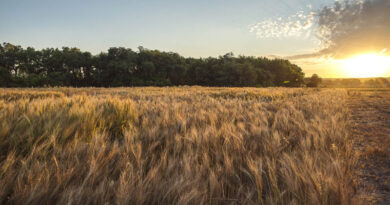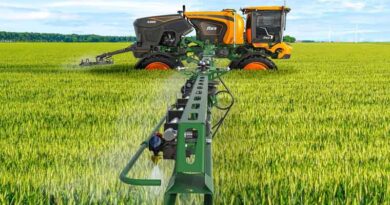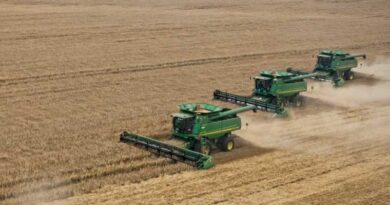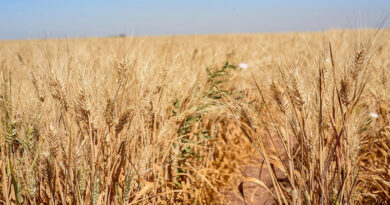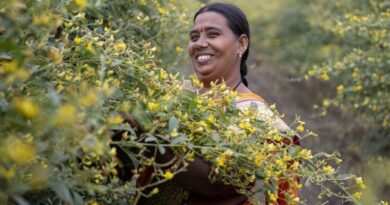SpeedBreed: A crop breeding center built for speed
20 September 2022, Australia: The time it takes to develop new varieties of economically important crops like rice, wheat and maize is not fast enough to keep up with the demand in a rapidly changing environment. The need for new varieties is particularly critical with the changes in climate patterns. Delayed monsoon, drought, or too much rain is disrupting global cropping cycles, providing opportunities for emerging new pests and diseases and farm operations leading to declining food security.
It may take 8 to 9 years to develop a new rice variety using conventional breeding methods and a few more years for the variety to reach farmers.
“A revolution in rice breeding is what we need now,” Bertrand Collard, a rice breeder at the International Rice Research Institute (IRRI) said in IRRI’s new breeding factory. “Not much has changed in the last 50 years. The methods used today in Asia are generally the same as the ones used in the 1960s and 1970s. More importantly, the rate of yield increase or genetic gain for irrigated varieties is less than 1% per year.”
Additionally, a study conducted by IRRI showed that reducing a breeding cycle by two years translates to an economic benefit of about USD 18 million over the useful life of the variety.
Newer breeding technologies have reduced that time to about six years but there is still room for improvement. To address the situation, scientists and plant breeders have stepped up their efforts to accelerate the development of new crop varieties that can better withstand harsher environmental conditions and resist pests and diseases, and produce higher yields that are also more nutritious, and more suited for sustainable agricultural systems.
Building breeding shortcuts
Longer generation times and seasonal constraints are the key restricting factor for scientists to develop new varieties. A faster varietal development can be achieved through a process known as speed breeding using Rapid Generation Advance (RGA) technology.
Speed breeding is an emerging strategy to develop new varieties in a shorter time. This strategy was initially developed in long and day-neutral crops by manipulating environmental conditions; for example lengthening daily light exposure to shorten the time to flower and produce seed bringing the succeeding generation as quickly as possible. Today, this technology is being developed in short-day crops as well.
Speed breeding technology utilizes full spectrum light and control growth chambers, making it superior and more advanced than glasshouses and field RGA.
In Field RGA, rice can complete 2-3 generations within a year in subtropical and tropical areas. Based on IRRI’s rice experiments in the Philippines, where climate is tropical, greenhouse-based RGA completed an average of 3.5 generations in 12 months, according to Dr. Collard. Some populations, especially with early or medium duration parents, and early lines from almost all populations, were advanced four generations within 12 months.
A facility built to breed varieties with the speed of climate change
In December 2021, India’s Prime Minister Narendra Modi inaugurated IRRI’s state-of-the-art speed breeding (SpeedBreed) facility at the IRRI South Asia Regional Centre (ISARC) in Varanasi.
Longer generation times and seasonal constraints are the key restricting factor for scientists to develop new varieties. The northern part of South Asia has seasonal constraints during the dry season such as low temperature. These problems can be solved with the help of SpeedBreed Facility; up to 4-6 generations can be taken within a year and the facility may reduce the development of new varieties by 2-4 years.
The center’s SpeedBreed Facility is capable of growing rice plants in controlled growth chambers using optimal light intensity and spectrum, photoperiod, temperature, humidity, fertilizer and irrigation (fertigation), and CO2 to accelerate the plant’s vegetative growth period, flowering and reducing grain-maturation period to shorten the generation time.
This technique hastens the process of genomic selection reducing the need for field testing that is required in conventional breeding. The facility will also speed up breeding programs through faster generation advancement in genomic selection-based programs, accumulation of favorable alleles through forward breeding, improvement of parental lines through back-cross breeding, haplotype assembly, and trait mapping activities through development of mapping populations. Speed breeding could also assist in gene editing or gene modification by advancing developed material quickly and in transferring traits to other popular varieties.
Speed breeding beyond rice
Rice is the first crop targeted in the SpeedBreed Facility. The team led by Dr. Vikas K Singh, the regional breeding lead for South Asia, has developed protocols to get 4-5 rice generations per year in early-, medium-, and late-duration varieties. However further refinements and validation of protocols remain under process. Once the optimum conditions for short-day rice have been established, the facility will be extended to other crops in collaboration with other institutes.
Speed breeding protocols have already been optimized by The Hickey Lab in Australia for spring wheat (Triticum aestivum), durum wheat (Triticum durum), barley (Hordeum vulgare), chickpea (Cicer arietinum) and pea (Pisum sativum) for up to six generations per year . With speed breeding, canola (Brassica napus) can produce 4 generations, instead of 2-3, under normal glasshouse conditions .
Also Read: FMC Corporation wins patent infringement case in China
(For Latest Agriculture News & Updates, follow Krishak Jagat on Google News)


